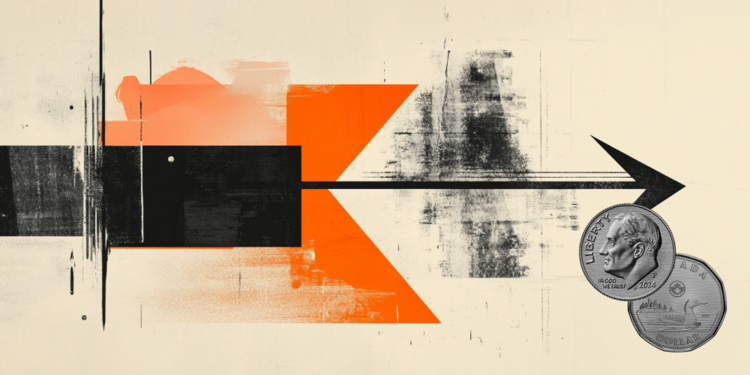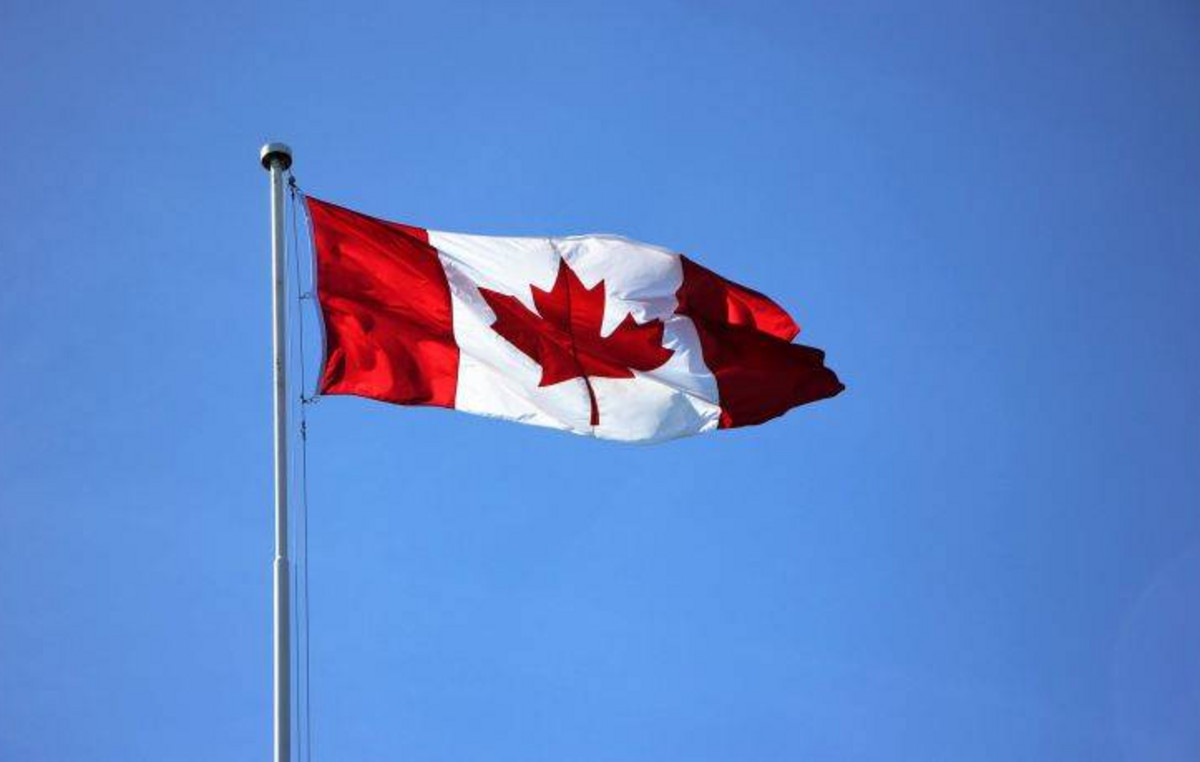- The US Consumer Price Index is expected to rise 3.6% year-over-year in September, slightly below the 3.7% increase recorded in August.
- Annual core CPI inflation is expected to decline to 4.1% in September.
- The US CPI inflation report could have a significant impact on the valuation of the Dollar, as it would alter how the market prices the Fed’s rate outlook.
The Bureau of Labor Statistics (BLS) will publish the expected inflation data for the Consumer Price Index (CPI) for September at 12:30 GMT.
The US dollar (USD) strengthened against its rivals in September and early October, boosted by the release of encouraging macroeconomic data and rising Treasury yields.
Although the Federal Reserve’s latest Summary of Economic Projections confirmed on September 20 that policymakers considered it appropriate to raise the interest rate by another 25 basis points before the end of the year, CME Group’s FedWatch tool shows that the Markets continue to value the probability of rates remaining unchanged in the 5.25%-5.5% range in 2023 at almost 70%. However, the massive sell-off in US Treasuries, sparked by growing fears of a shutdown of the Government in the last week of September, drove a new rise in yields in the United States.
US CPI inflation data could influence market positioning on the Fed’s rate outlook, especially after the September employment report revealed an impressive 336,000 increase in non-farm payrolls. Commenting on the outlook for monetary policy over the weekend, Fed Governor Michelle Bowman said the US central bank will likely have to tighten monetary policy further and keep interest rates at a restrictive level for some time. time for inflation to reach the 2% target again.
What can we expect from the next CPI report?
The US Consumer Price Index is expected to rise 3.6% annually in September, slightly slower than the 3.7% increase recorded in August. The core CPI, which excludes food and energy price volatility, will rise 4.1% over the same period, down from the 4.3% growth recorded in August.
Both the monthly CPI and the underlying CPI will increase by 0.3%. Oil prices continued to rise in September, with West Texas Intermediate gaining 9% monthly per barrel. Although the first week of October saw a sharp decline in crude oil prices, the resumption of the conflict between Israel and Hamas could keep energy costs elevated in the short term. However, it is too early to know how geopolitical developments will affect the inflation outlook and the Fed’s monetary policy.
Reporting on US inflation in September, “the high nonfarm payrolls figure raises the possibility that the Fed will raise rates again, but it is not a decisive factor. The US Consumer Price Index data September releases this week should be more revealing,” say analysts at Australia and New Zealand Bank Group (ANZ) and add: “We expect core inflation to rise 0.2% month-on-month, which should be welcomed by the Fed.” .
The ISM manufacturing PMI prices paid index – the inflation component – fell sharply to 43.8 in September from 48.4 in October, highlighting that input prices in the sector are falling at a faster pace. fast. Meanwhile, the services PMI prices paid index remained stable at 58.9, demonstrating the lack of progress in controlling service sector inflation.
When will the Consumer Price Index be reported and how could it affect EUR/USD?
Consumer Price Index inflation data for September will be released at 12:30 GMT. The Dollar Index, which measures the dollar’s valuation against a basket of six major currencies, benefited from safe-haven demand earlier in the week before coming under strong downward pressure. The downward correction of US bond yields and the improvement in the risk climate hindered demand for the Dollar.
Market positioning suggests that the USD has room to the upside should inflation data come in stronger than expected. Investors are likely to pay close attention to the monthly underlying CPI reading, which cannot be distorted by base effects. A monthly core inflation data of 0.5% or higher could revive expectations of a new Fed rate hike and fuel another dollar recovery. Given the European Central Bank’s (ECB) willingness to keep rates stable, EUR/USD is likely to turn lower in this scenario.
On the other hand, a monthly underlying CPI equal to or lower than the market consensus of 0.3% could make it difficult for the Dollar to resist its peers. Speaking at the Economic Club of New York last week, San Francisco Federal Reserve President Mary Daly said there was no need to tighten monetary policy further following the recent rise in U.S. bond yields. US Treasury. “The need for us to take further action is less because the financial markets are already moving in that direction and have done the work,” explained Ella Daly. Therefore, investors could refrain from betting on a further Fed rate hike and help EUR/USD gain traction.
Eren Sengezerchief analyst of the European session at FXStreet, offers a brief technical outlook for EUR/USD and explains:
“The Relative Strength Index (RSI) on the daily chart recovered to 50 this week and EUR/USD made a daily close above the 20-day SMA for the first time in over a month, which points to a buildup of bullish momentum.”
Eren also highlights the key technical levels to watch:
“The 1.0650 level (23.6% Fibonacci retracement of the July-October downtrend) lines up as a key pivot for EUR/USD. If this level is confirmed as support, buyers could remain interested in the Euro. In this scenario, 1.0750 (38.2% Fibonacci retracement, 50-day SMA) could be set as the next target before 1.0830, where the 100-day and 200-day SMA align.”
“Alternatively, sellers could take action if EUR/USD fails to stabilize above 1.0650 and push the pair back towards 1.0550 (static level), 1.0500 (psychological level) and 1.0450 (downtrend endpoint). “
Euro price this week
The following table shows the percentage change of the Euro (EUR) against the main currencies quoted this week. The EUR was the strongest currency against the Japanese Yen.
| USD | EUR | GBP | CAD | AUD | JPY | NZD | CHF | |
| USD | -0.53% | -0.68% | -0.54% | -0.67% | -0.01% | -0.49% | -0.88% | |
| EUR | 0.51% | -0.15% | -0.01% | -0.15% | 0.52% | 0.04% | -0.34% | |
| GBP | 0.68% | 0.16% | 0.15% | -0.02% | 0.67% | 0.17% | -0.18% | |
| CAD | 0.53% | 0.00% | -0.15% | -0.13% | 0.52% | 0.04% | -0.32% | |
| AUD | 0.66% | 0.17% | 0.01% | 0.16% | 0.68% | 0.18% | -0.17% | |
| JPY | 0.01% | -0.52% | -0.67% | -0.52% | -0.69% | -0.52% | -0.86% | |
| NZD | 0.51% | -0.02% | -0.17% | -0.02% | -0.18% | 0.51% | -0.38% | |
| CHF | 0.84% | 0.34% | 0.19% | 0.33% | 0.17% | 0.84% | 0.36% |
The heat map shows the percentage changes of the major currencies against each other. The base currency is chosen in the left column, while the quote currency is chosen in the top row. For example, if you choose the euro in the left column and scroll down the horizontal line to the Japanese yen, the percentage change shown in the box will represent EUR (base)/JPY (quote).
Inflation FAQ
What is Inflation?
Inflation measures the rise in prices of a representative basket of goods and services. General inflation is usually expressed as a month-on-month and year-on-year percentage change. Core inflation excludes more volatile items, such as food and fuel, which can fluctuate due to geopolitical and seasonal factors. Core inflation is the figure economists focus on and is the target level of central banks, which are mandated to keep inflation at a manageable level, typically around 2%.
What is the Consumer Price Index (CPI)?
The Consumer Price Index (CPI) measures the variation in prices of a basket of goods and services over a period of time. It is usually expressed as a percentage of inter-monthly and inter-annual variation. Core CPI is the target of central banks as it excludes food and fuel volatility. When the underlying CPI exceeds 2%, interest rates usually rise, and vice versa when it falls below 2%. Since higher interest rates are positive for a currency, higher inflation usually translates into a stronger currency. The opposite occurs when inflation falls.
What is the impact of inflation on currency exchange?
Although it may seem counterintuitive, high inflation in a country drives up the value of its currency and vice versa in the case of lower inflation. This is because the central bank will typically raise interest rates to combat higher inflation, attracting more global capital inflows from investors looking for a lucrative place to park their money.
How does inflation influence the price of Gold?
Gold was once the go-to asset for investors during times of high inflation because it preserved its value, and while investors often continue to purchase gold for its safe haven properties during times of extreme market turmoil, this is not the case. most of the time. This is because when inflation is high, central banks raise interest rates to combat it.
Higher interest rates are negative for Gold because they increase the opportunity cost of holding Gold versus an interest-bearing asset or placing money in a cash deposit account. On the contrary, lower inflation tends to be positive for Gold, as it reduces interest rates, making the shiny metal a more viable investment alternative.
Source: Fx Street
I am Joshua Winder, a senior-level journalist and editor at World Stock Market. I specialize in covering news related to the stock market and economic trends. With more than 8 years of experience in this field, I have become an expert in financial reporting.





